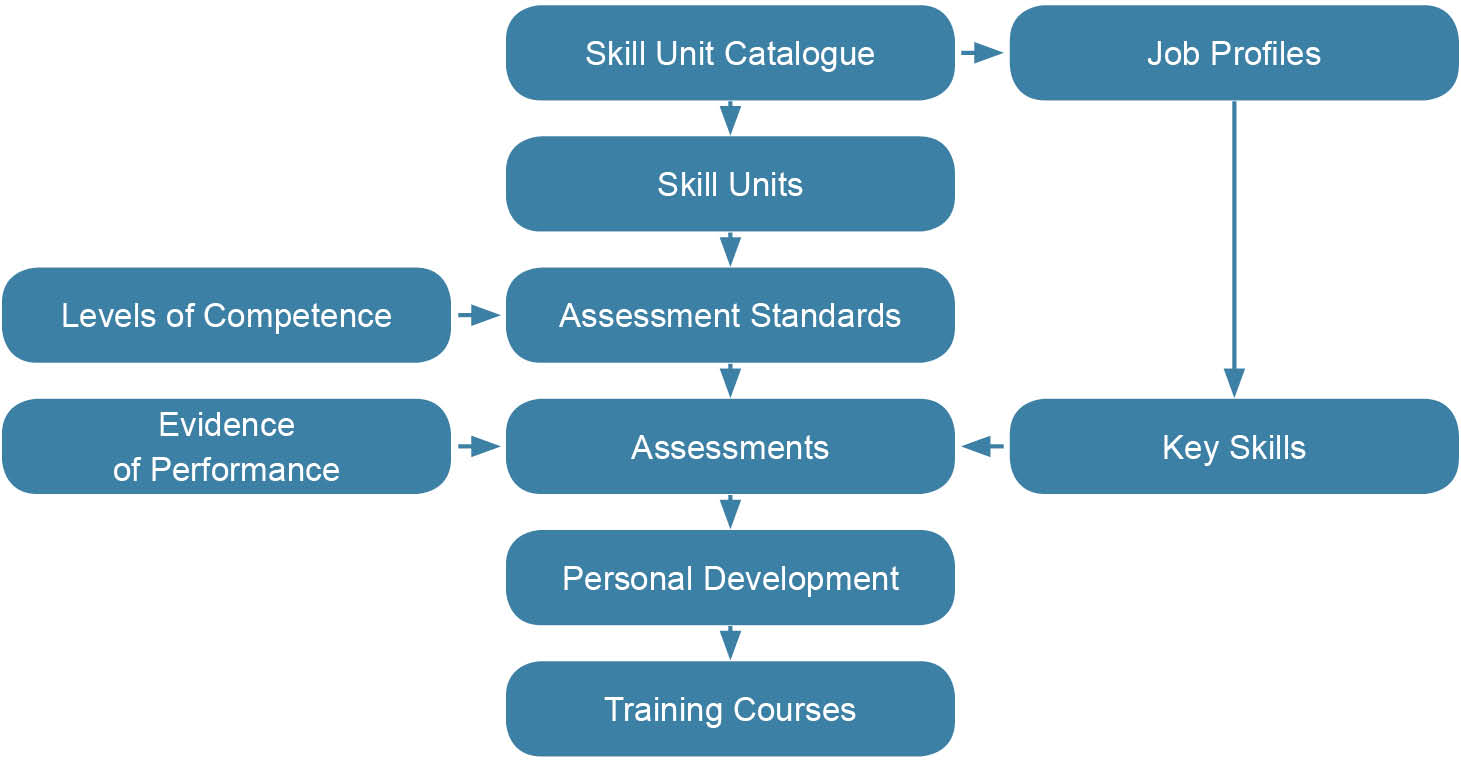Assessments
Assessments are used to make objective judgements about performance, knowledge and attitude. It involves collecting evidence and making decisions about that person’s competence based on that evidence.
No fine distinctions are required for assessing competence. A person either meets the standard or does not. The person is either competent or not-yet-competent.
In general the assessment process includes the following:
- Evidence collection
- Formal assessment
- Feedback
Evidence collection
As competence is a delicate combination of skill, knowledge and attitude it is absolutely vital that the presented evidence contains elements of all three of them.
Formal assessment
In most instances the formal assessment is nothing more than bringing collected evidence together and to make an objective judgement if the presented evidence is sufficient to declare “Competence”.
Feedback
Although officially not part of an assessment, it is clearly an important part, as assessments are not only meant to measure competence, but also to help employees in their further development. Constructive feedback will increase the self-awareness of employees and will encourage self-development.
Competence Assurance process
Following is a simplified diagram demonstrating the different components of the CAP and their relationships:
Click on the buttons below to read more information

Read more about Competence Assurance Process >>
